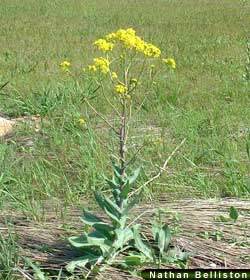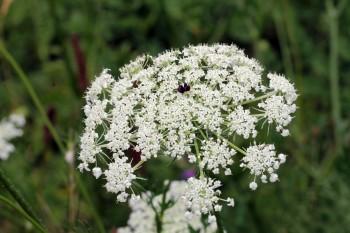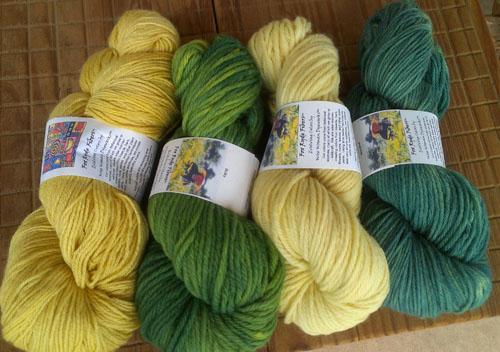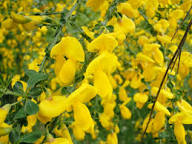
 6
6












 4
4






"Instead of Pay It Forward I prefer Plant It Forward" ~Howard Story / "God has cared for these trees, saved them from drought, disease, avalanches, and a thousand tempests and floods. But he cannot save them from fools." ~John Muir
My Project Page
 1
1












 6
6






Many bindweed vines, Convulvulus arvensis, were gathered to make a big batch of dye-bath (the same way as last summer, except I used a stainless-steel pot instead of aluminum for the first step of simmering). The strained dye-bath was then divided between two other pots -- one rusty iron, one stainless steel. I immersed identical fibers -- silks, wool, cotton (pre-mordanted in soy milk) and linen -- put the lids on the pots and waited two months.
In Sheron’s dye gardens, you’ll find goldenrod, Japanese indigo, dyer’s broom, coreopsis, agrimony root, madder, rabbit brush, bindweed, Russian thistle, and ragweed. This woman is fearless about picking something, putting it in a pot and seeing what happens. But her fearlessness is tempered with experience – she’s been dyeing since 1972. I was amazed at the colors she achieves, using individual plants or combinations to experiment with color. Bindweed dyes her wool a soft lemon yellow, while rabbit weed creates a more vibrant shade. She uses her own Japanese indigo for blue and green shades.

 1
1




Burgess even likes to look for invasive species as sources for color, and she's often used French broom and wooly thistle, invasive plants that are overtaking wildlands and national parks in California.
"Our national parks are all spraying [them] with herbicides from Dow and Monsanto," she says. "One of my responses is to pick that plant and find a use for it." Wooly thistle produces an almost neon yellow, while French broom "makes a great sage green."
The yellow flowers yield a light fawn dye if alum is used as a mordant, green with chrome as the mordant, and yellow with tin as the mordant. Mordants set the color on the fabric.
 2
2





 3
3




r ranson wrote:I got a message from a friend that I need to harvest every broom flower I can find. I cut the branches, strip the flowers (some leaves are okay too), then bag them up and put them in the freezer. When there's enough, she's going to teach me how to dye with them.

The best gardening course: https://gardenmastercourse.com
Permies.com FAQ
 2
2




 3
3




Not today, satan.
 1
1




 2
2




Liv Smith wrote:
r ranson wrote:I got a message from a friend that I need to harvest every broom flower I can find. I cut the branches, strip the flowers (some leaves are okay too), then bag them up and put them in the freezer. When there's enough, she's going to teach me how to dye with them.
Is this the broom plant you're referring to?

We have a bunch, if it's this one. Never thought of using it for dyeing, what a cool idea.


 4
4




The best gardening course: https://gardenmastercourse.com
Permies.com FAQ
 4
4




Lisa Allen MH (AstroHerbalist)
TimingMagic.com









|
Chop wood, carry water. Find enlightenment. Chop wood, carry water, and read tiny ads.
The new kickstarter is now live!
https://www.kickstarter.com/projects/paulwheaton/garden-cards
|









